You can’t visit
Vietnam without going a little wild. Though its two powerhouse cities –
Hanoi and
Ho Chi Minh City – draw plaudits for their awe-striking museums, enlightening historical monuments, and seam-splitting food scenes, the country really sparkles when you step into one of its 33 national parks. These vast green spaces are home to gargantuan caves, dramatic limestone mountains, golden coastlines and dense thickets of jungle where gibbons dangle from vines and the promise of adventure lurks behind every mangrove tree. Here’s our pick of the best national parks to visit in Vietnam.
Editor's note: during COVID-19 there are restrictions on travel and opening hours may vary. Check the latest guidance in Vietnam before planning a trip, and always follow local health advice.
Cat Tien National Park
One of the outstanding natural treasures of southern Vietnam, the 72,000-hectare
Cat Tien National Park comprises an amazingly-biodiverse region of lowland tropical rainforest, and the hiking, mountain-biking and bird-watching here are some of the best in the country.
Bear in mind that visitors rarely see the park's larger animals (like elephants and leopards), which live deep in the jungle, but you have a good chance of spotting primates such as pygmy lorises and langurs monkeys, as well as gibbons (which are the focus of early-morning guided tours). There’s also a wide array of bird life to see – rare species include the orange-necked partridge and Siamese fireback. Like most parks on this list, Cat Tien tends to get busy during weekends and public holidays – visit during the week for a more serene experience.
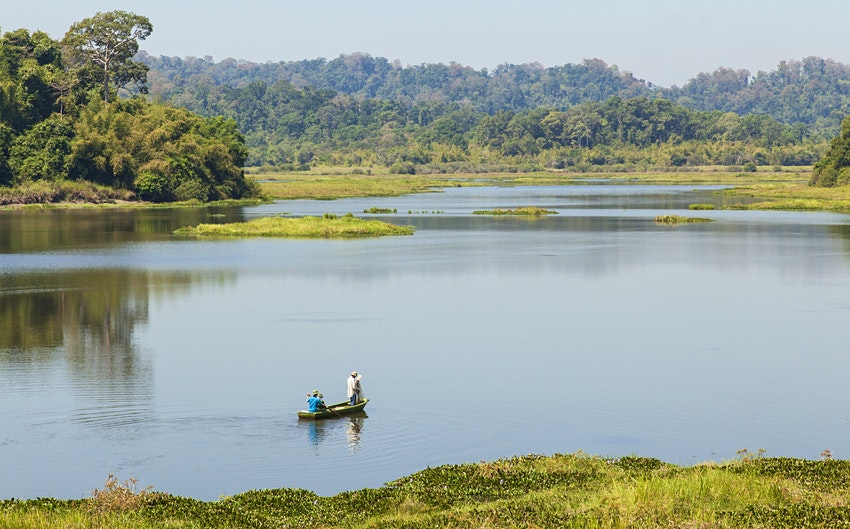 Fishermen on Crocodile Lake, Cat Tien National Park © Rae_The_Sparrow / Getty Images
Fishermen on Crocodile Lake, Cat Tien National Park © Rae_The_Sparrow / Getty Images
Phong Nha-Ke Bang National Park
With jagged hills shrouded in rainforest, and mountain rivers coursing through impressive ravines, above ground the
Phong Nha-Ke Bang region is one of Vietnam's most spectacular national parks.
Head underground for even more proof that this area should be part of any Vietnamese itinerary. A fortunate selection of travellers (with a cool $3000 to spare) can experience the cathedral-like chambers of
Hang Son Doong, one of the world's largest caves, but more accessible multi-day tours take in other caves in the park, including the vast Hang En, which boasts its own beach, for a fraction of the cost.
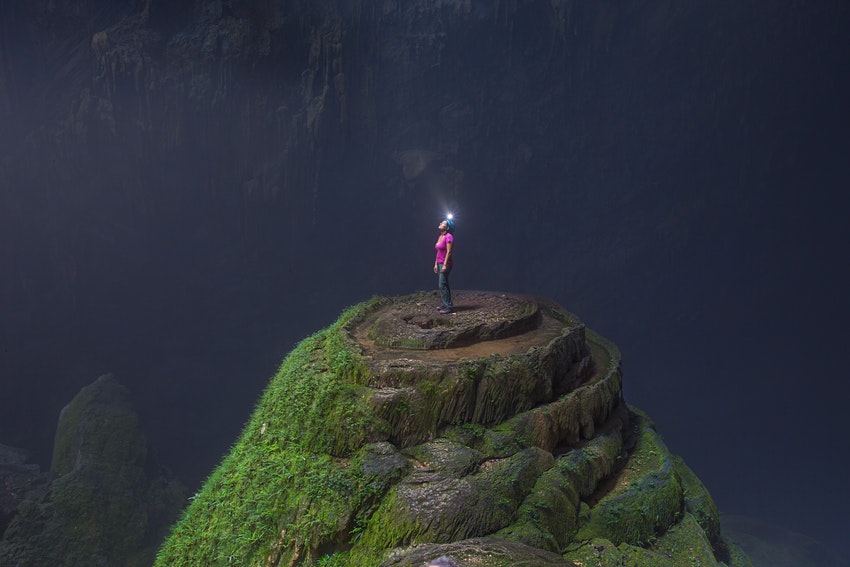 While a visit to the dramatic Hang Son Doong might prove too expensive for most, there are many other caves to explore in Phong Nha-Ke Bang © john spies / 500px
While a visit to the dramatic Hang Son Doong might prove too expensive for most, there are many other caves to explore in Phong Nha-Ke Bang © john spies / 500px
Cuc Phuong National Park
Established in 1962, this national park, three hours south of Hanoi, is one of Vietnam’s most important protected areas. Though wildlife has suffered a precipitous decline in Vietnam in recent decades, the park’s 222 sq km of primary tropical forest remains home to an amazing variety of animal and plant life: 336 species of bird, 135 species of mammal, 122 species of reptile, 2000 plant species and counting.
Hiking is the name of the game here. Short walks include a 220-step trail up to the Cave of Prehistoric Man, where human graves and tools were found that date back 7500 years, making it one of Vietnam's oldest sites of human habitation. Longer undertakings, meanwhile, include a strenuous 15km (approximately five-hour) hike to Kanh, a Muong village, where you can stay overnight here with local families and raft on the Buoi River.
Phu Quoc National Park
Despite ongoing development to the island (including, but not limited to, an international airport, a Vietnamese version of Disneyland and the world's longest over-sea cable car), nearly three quarters of
Phu Quoc is forested, and the trees and adjoining marine environment enjoy official protection as a Unesco Biosphere Reserve.
Arguably the biggest draw here are the park’s picturesque beaches (ranking among
the best beaches in Vietnam), where visitors can laze on golden sands or snorkel above stunning coral reefs. But in-land there are pagodas, temples and waterfalls to be uncovered, entangled in the thick jungle. A motorbike or mountain bike is the best way to explore, which are able to tackle the bumpy dirt roads that cut through the park.
Phu Quoc's biggest draw is perhaps its wonderful coastline © Jimmy Tran / Shutterstock
Bai Tu Long National Park
The spectacular islands of
Bai Tu Long Bay, immediately northeast of
Halong Bay, form Bai Tu Long National Park, a protected area that is every bit as beautiful as its glamorous, world-famous neighbour to the south. Despite this, Bai Tu Long manages to fly somewhat under the radar, remaining far quieter, less polluted and relatively undeveloped by comparison.
As with Halong Bay, the best way to experience the full limestone-pinnacle-scattered seascape is on an overnight cruise, where passengers can hop off to sun themselves on one of the island beaches, take to the calm blue waters in a kayak or simply sit up on deck with a cold beer and watch the sun slip beneath the bay – who said exploring a national park required getting muddy?
Think of Bai Tu Long as Halong Bay without the crowds © Pascal Boegli / Getty Images
Ba Be National Park
Detour off the regular Vietnam tourist trail in
Ba Be National Park. Located in the far north of the country, it’s an essential destination for adventurous travellers, with towering limestone mountains, plunging valleys and evergreen forests.
Waterfalls, caves and lakes combine in a landscape that sustains over 550 different plants and hundreds of different bird and animal species. Explore Ba Be’s natural spectacle by boat or on trekking and mountain-biking excursions, before relaxing and recharging in the rustic homestays and village guesthouses of the local Tay ethnic minority.
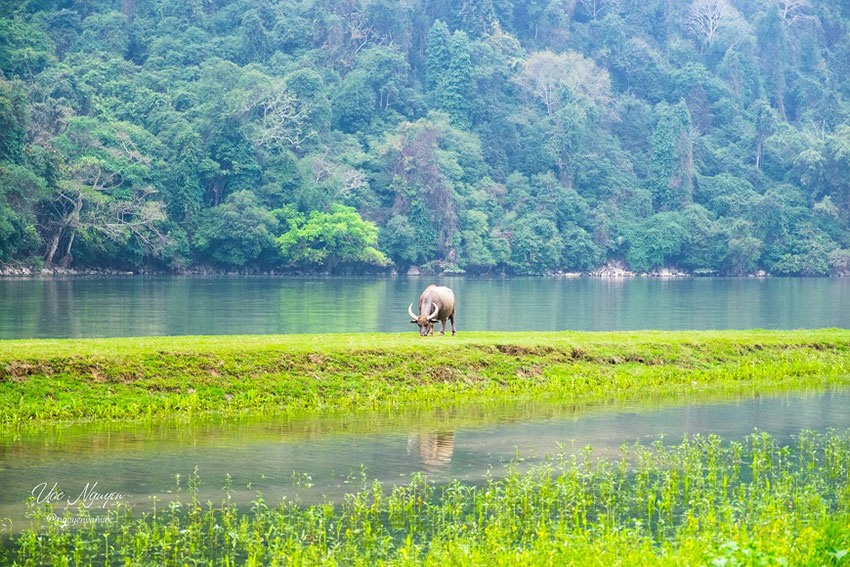 Ba Be National Park
Ba Be National Park
Bach Ma National Park
A French-era hill station, this national park reaches a peak of 1450m at Bach Ma mountain, only 18km from the coast. The cool climate attracted the French, who built over a hundred villas here (many of which were destroyed in the Resistance War Against America that scarred this region).
Today the national park stretches from the coast to the Annamite mountain range at the
Lao border, and is easily explored as a day trip from the popular tourist towns of
Hue or
Danang. More than 1400 species of plants, including rare ferns and orchids, have been discovered in Bach Ma, representing a fifth of the flora of Vietnam. As for wildlife, there are 132 kinds of mammals (three of which, the antelope-like saola, and deer-resembling Truong Son muntjac and the giant muntjac, were only discovered in the 1990s), and nine species of primates, including small numbers of the incredible-looking (and incredibly-rare) red-shanked Douc langur. There are also some nice hikes to scenic viewpoints to tackle, plus some waterfalls for swimming. Unexploded ordnance is still around, so ensure you stick to the trails.
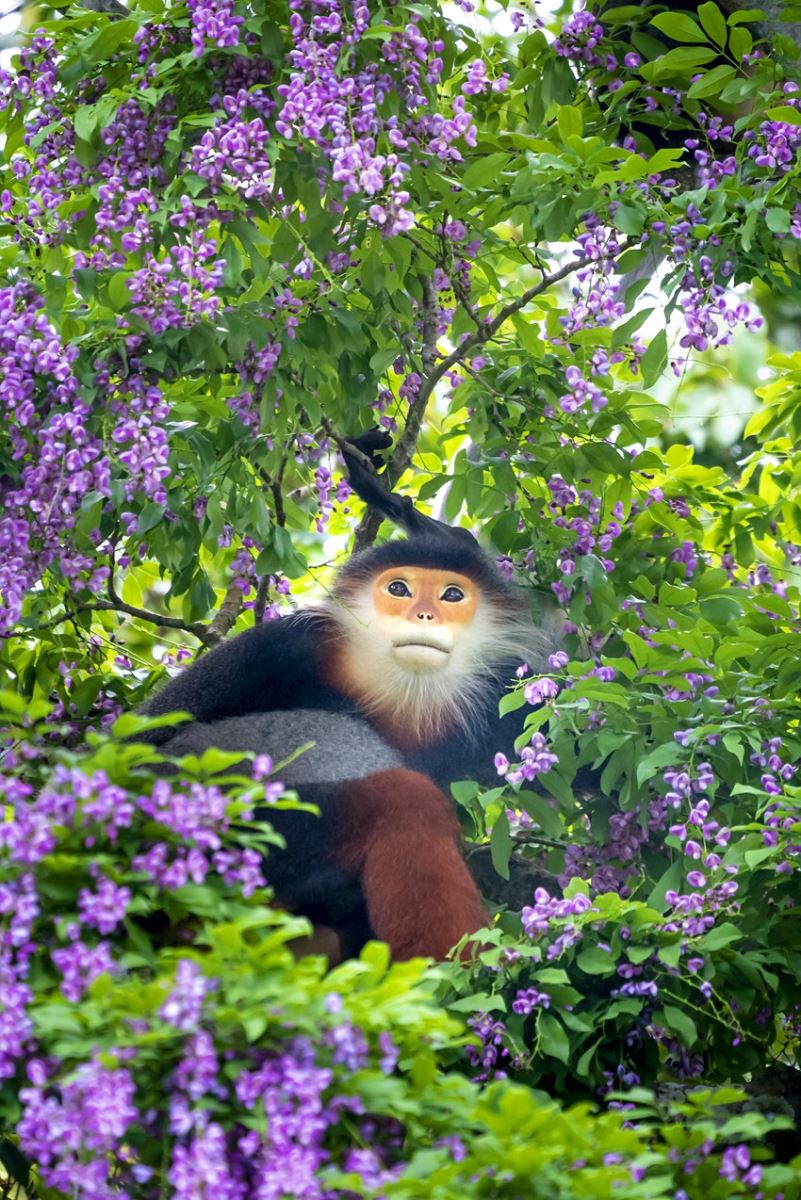 Try and catch a glimpse of the amazing red-shanked Douc langur in Bach Ma National Park © quangpraha / Getty Images
Try and catch a glimpse of the amazing red-shanked Douc langur in Bach Ma National Park © quangpraha / Getty Images
Cat Ba National Park
Cat Ba's beautiful national park is home to 32 species of mammal, including most of the world's 65 remaining golden-headed langurs, the world's most endangered primate. There are some good hiking trails here, including the short but strenuous hike to the top of Ngu Lam peak, which offers dramatic views over the surrounding jungle, as well as the challenging 9km hiking trail through the park to the village of Viet Hai – best done with a guide. Lunch and homestays are available in Viet Hai.
Of the mammals present in the park, the more commonly seen include macaques, deer, civets and several species of squirrel, including the giant black squirrel. Seventy bird species have been spotted here, including hawks, hornbills and cuckoos.
►
Trekking & Kayaking in Cat Ba
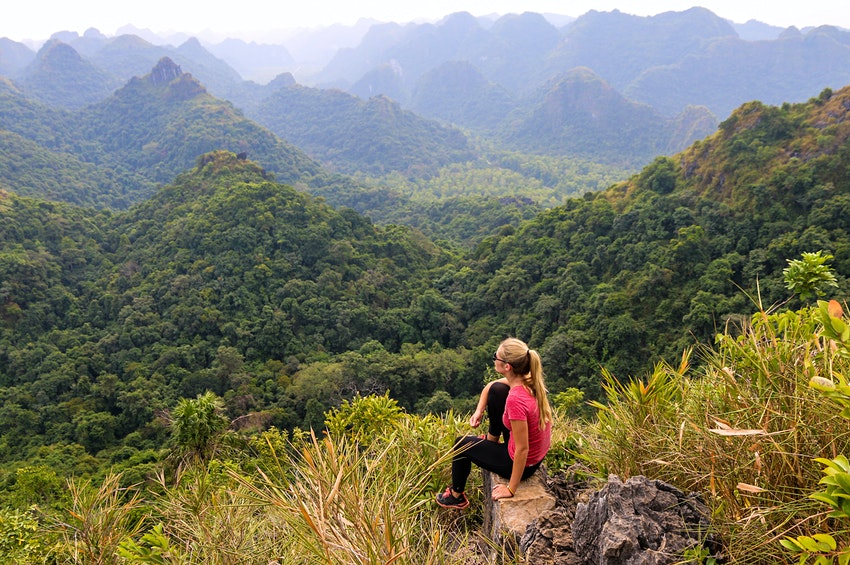 Hit the hiking trails of Cat Ba National Park © Daliusposus / Shutterstock
Hit the hiking trails of Cat Ba National Park © Daliusposus / Shutterstock
Source: lonelyplanet.com